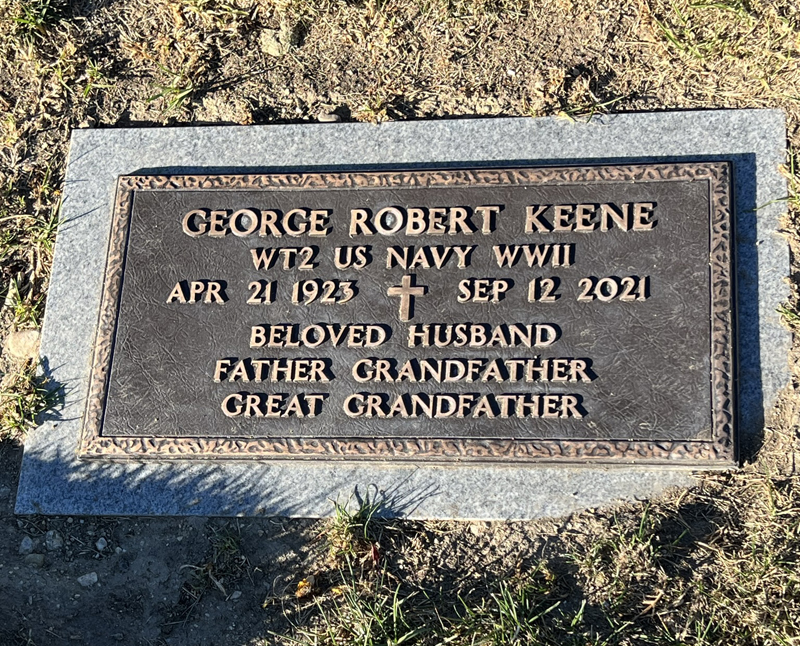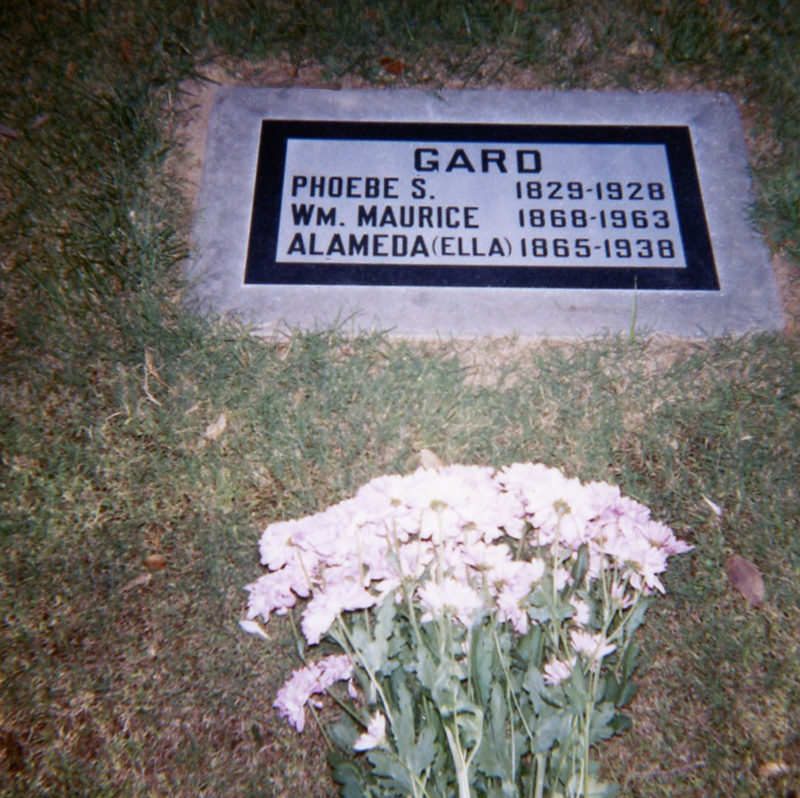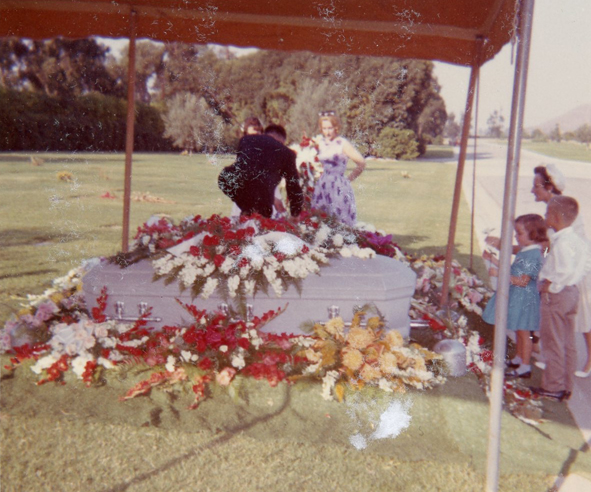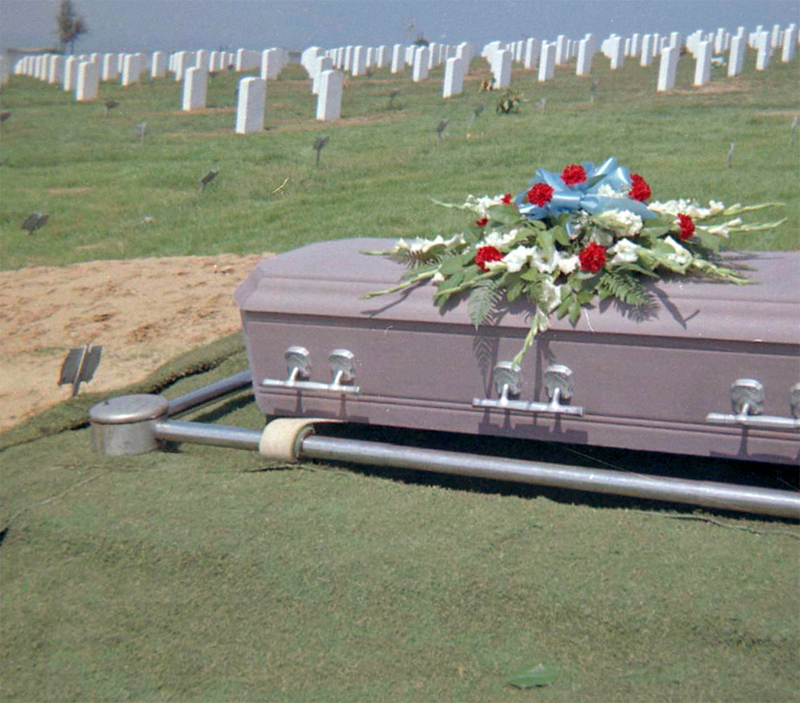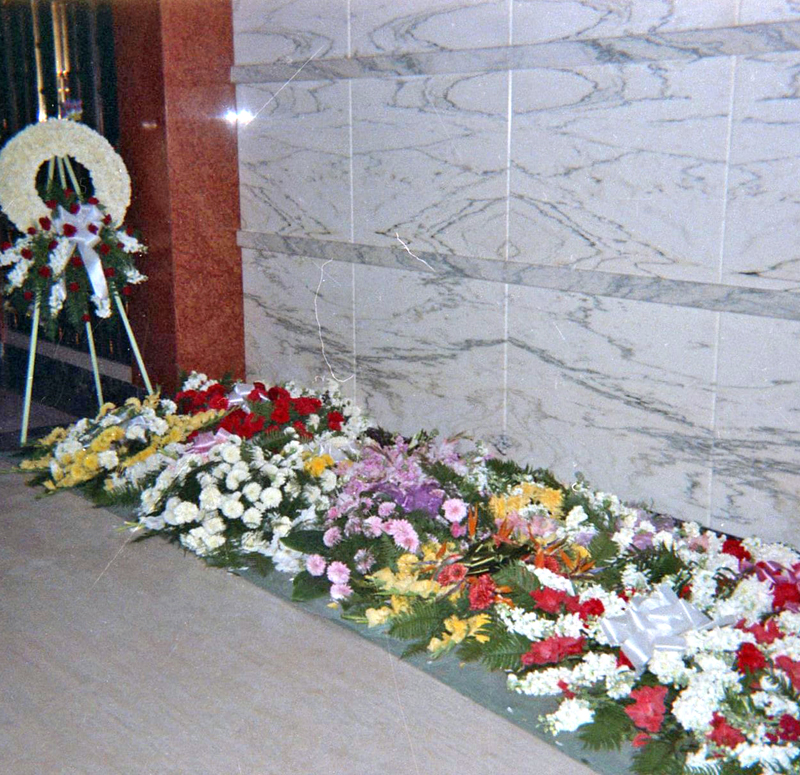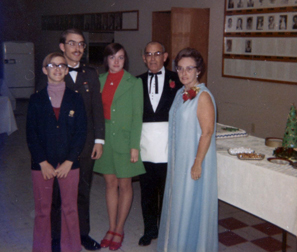I’ve never thought of myself as an outdoorsy kind of person. I’m pretty sure that those who know me don’t think of me as outdoorsy, either. I need a hot shower, a flushing toilet, and electricity for my hairdryer. And, I’m way too old and arthritic to sleep on the ground.
But, I may have to rethink that. I love to bicycle, but only outdoors. An indoor stationary bike is my version of torture. My usual path is along the San Gabriel Channel, which is always full of birds of one sort or another. Yesterday, there was a white heron, eating some smaller prey, either a fish or a frog. Last week, there was a whole family of ducklings, waddling behind their mother mallard. Occasionally, I will see a pelican or a turkey vulture. Always, there are loons, gulls, and smaller birds, unknown to me.
I’ve recently discovered the free app ‘Merlin’, developed by Cornell University Lab of Ornithology. It’s designed to listen for and identify birds in the environment around you, and it is fascinating. I think I might yet become a birder.
And, I have discovered these past few years love of love hiking. I’ve wandered along the South West Coast Path and in Shenandoah National Park. I’m hoping to go next year to Spain for the Santiago de Compostela, of course with my trusty hiking partner, my cousin, Sue.
Being outdoors has been healing these past few years, when so much of my life was upended during and after the COVID years. It’s not just me, either. There’s plenty of scientific research about the benefits, both physical and emotional, of being outside.
So, what does “The Great Outdoors” have to do with my family history?
Let’s find out, shall we?
Working Outdoors:
The earliest photo I have of my family outside was taken in 1885, in Thayer, Kansas. It is of my Gard ancestors, my great-grandparents. The family is posed outside their very simple wooden farmhouse. The Gards were farmers, so of course, their work meant long hours outside, whatever the weather. They didn’t need to find ways to be outdoors; rather the opposite, I imagine.

The next photo taken outdoors is of my grandfather, Charles Keene, Sr., in 1895, in Massachusetts. He worked out of a wagon and delivered produce in Saugus; again, this work was outdoors, and I can imagine that in Massachusetts, it could be downright dangerous at times. Charles is the young boy holding by the horse.

By the later years of the 1800s and into the 1900s, it was more common to have photos taken outdoors, especially with the advent of personal cameras which were portable. Still, professional studio photos continued to make up the majority of photographs.
Below is a photo of my great-grandparents, Willis D. and Eva Kesterson Gard, and their daughter, Vida Bula, my mother’s mother. It was taken in about 1898 in Los Angeles, in front of the store my great-grandparents ran.

Around this time, my great-grandparents must have purchased a camera, because I have candid outdoor photos of my grandmother, beginning when she was about two years old, in 1898-1899. My goodness, she was cute!

I don’t know who the man is in the photo below, but I do know that it was taken in 1907 in Wisconsin, depicting “sugaring off”; I’m going to guess that it is some one on the Norwegian side, my mother’s paternal grandmother. Like many Norwegians, they settled in Wisconsin, where the terrain and the weather were much like their homeland. Due to the lack of a studio marking, and the fact that it was taken outdoors, I’m surmising that someone in the family owned a personal camera.
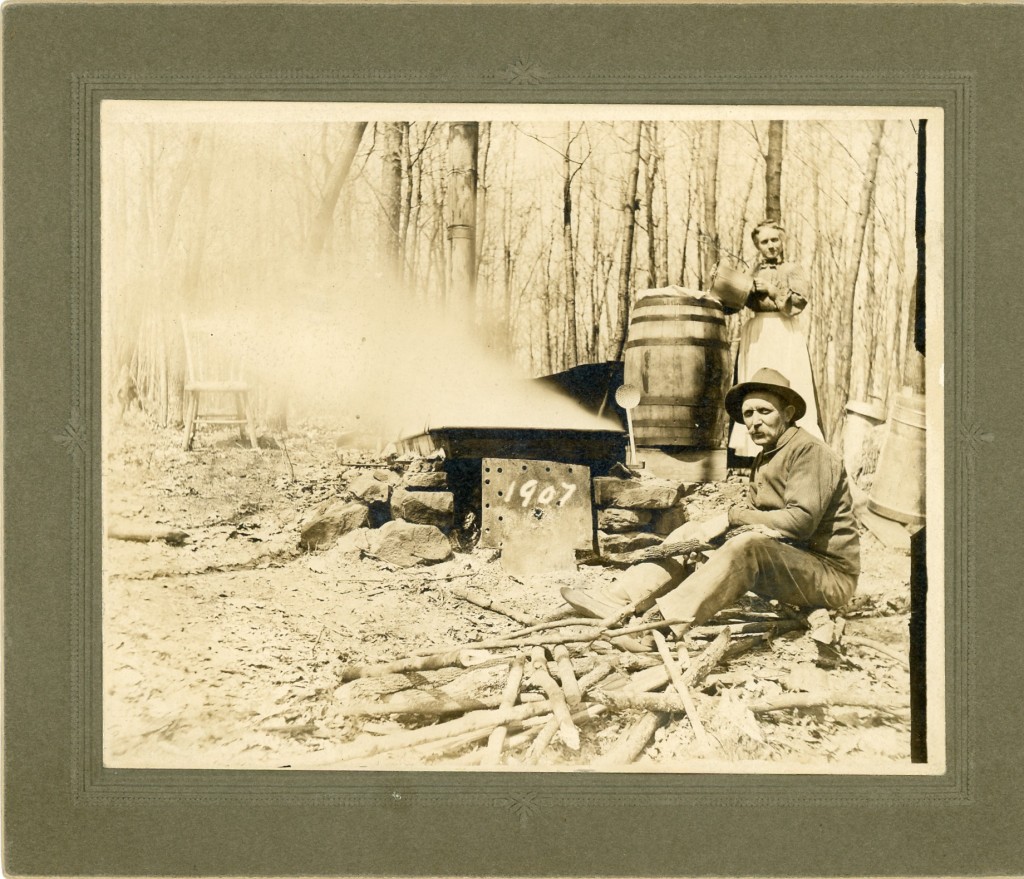
Hunting and Fishing:
Around 1908, I begin to see photographs from hunting trips. The photo below is a postcard, made from photograph, to send to friends and family. It was sent to my great-grandfather Willis Wells from his sister, Hattie. It is their brother, Berton, and his freshly killed deer.

Our family had many hunters and fishermen through the years; Uncle Berton, my Grandfather Wells, my father, and my brothers. I know growing up that my dad’s hunting trips weren’t for fun or trophies; we ate the meat he caught.
The note on the back of this photo 1943 only said, “Dad’s pheasants.” I believe this is my mother’s father, as my father and his father were active military at this time.

Both my dad and Nampie Wells, my mom’s father, enjoyed fishing. Below is opening day for trout season 1947, in Nine Mile Canyon, up in the mountains above our Inyokern home.

Th photo below is one of my very favorites; it’s my Nampie Wells, august 1962, at Wickiup Dam, Oregon, enjoying a bit of fishing.
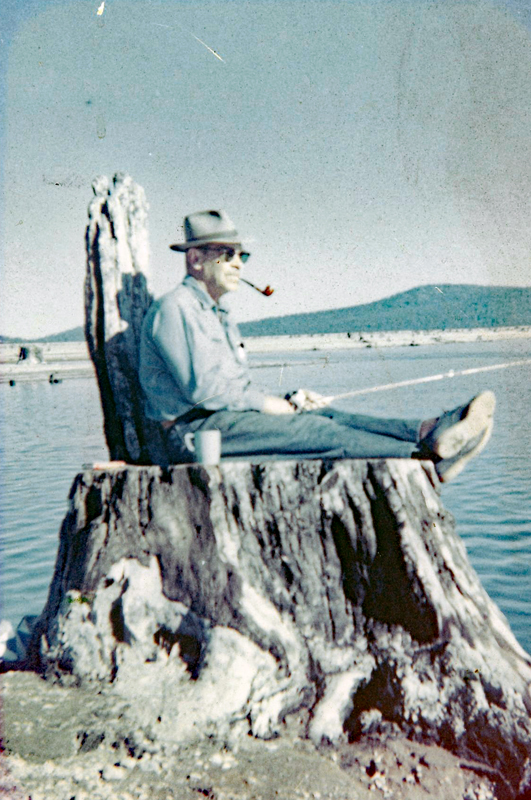
Cycling:
I am not the first cyclist in my family, either. The 1918 photo below is of my distant cousin, Homer Pratt, on his motorbike, which today would probably be called a moped.

In 1968, my parents bought us three younger kids a dirt bike. Oh, the fun we had! We made trails and jumps in the empty field next door and spent hours riding. we thought it was the coolest thing, but now, looking at the photos, it wasn’t much bigger than a banana-seat bicycle.

Hiking:
I’m not the first hiker in the family, too. the photo below is of my Grandmother Wells, taken in 1919, atop Mt. Wilson. It’s probably my favorite photo of her.

The Beach:
I confess I am not a beach person; I love the ocean, but the beach has too much sand for me. My dad’s family, however, spent many afternoons on the beach, around Santa Monica, which wasn’t too far from their Los Angeles home and even farther than their home in cold, wet, unsunny Massachusetts. The photo below, (one of many at the beach) is of my father, Charles Keene, Jr., and his grandmother, my great-grandmother Keene, taken in 1920.

The Keene and Wells families both spent time on the beach in Long Beach, as well. The photo below is from 1922, taken at Long Beach, and is of five of the six Keene siblings, Betsy, Bea, Emma, Charles, and Virginia. (Uncle George wasn’t born until 1923.)
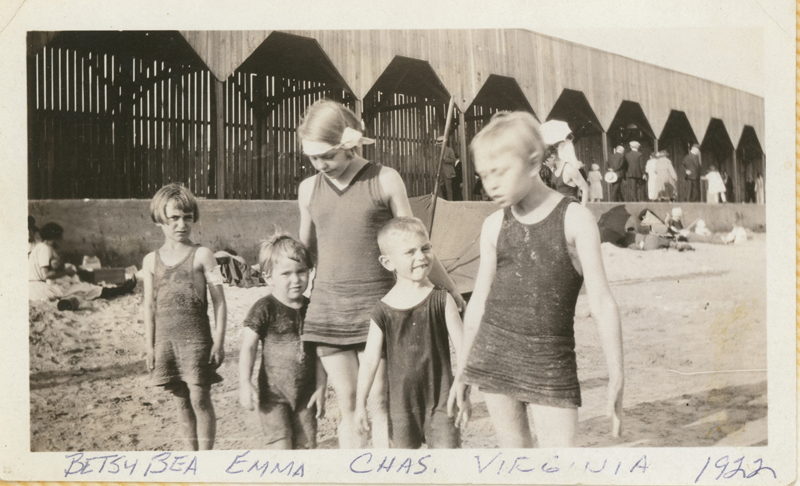
This is a photo of my mom taken in 1926, on the beach at Long Beach. It’s one of my favorites
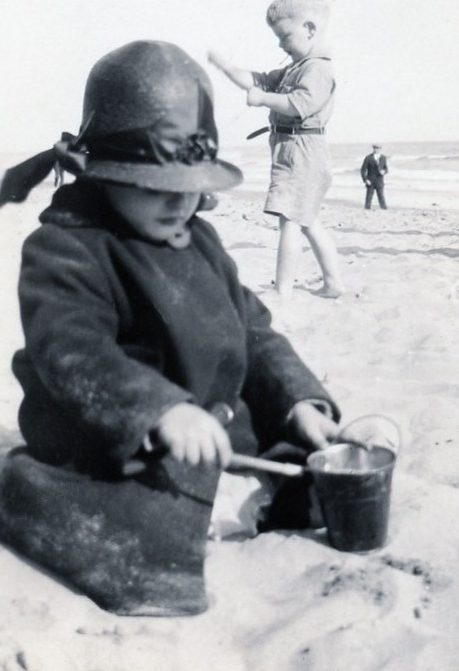
Below is a photo of my mother with aunt Ida and my great-grandmother Wells in Bixby Park, Long Beach, circa 1923-24.

Gardening:
Another outdoor activity enjoyed by my family is gardening. I am absolutely rubbish at it, although I still try from time to time. In vain. But I digress… The photo below is my mother, Bula, and her mother, Vida, in the garden of their home on Gertrude Street, Los Angeles, in 1922. My mother would love to garden her whole life, growing flowers and vegetables where ever she lived.
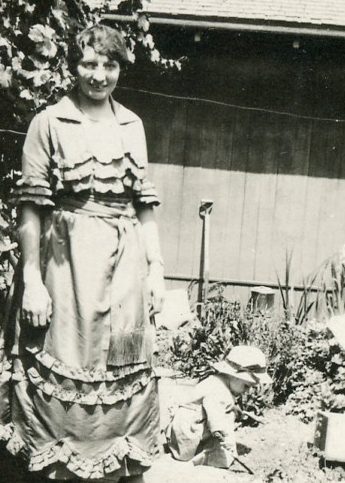
Nana’s mother, Great-grandma Gard, also loved to grow flowers, even into her 80s and 90s. The photo below of her in her abundant flower garden was taken in 1948.
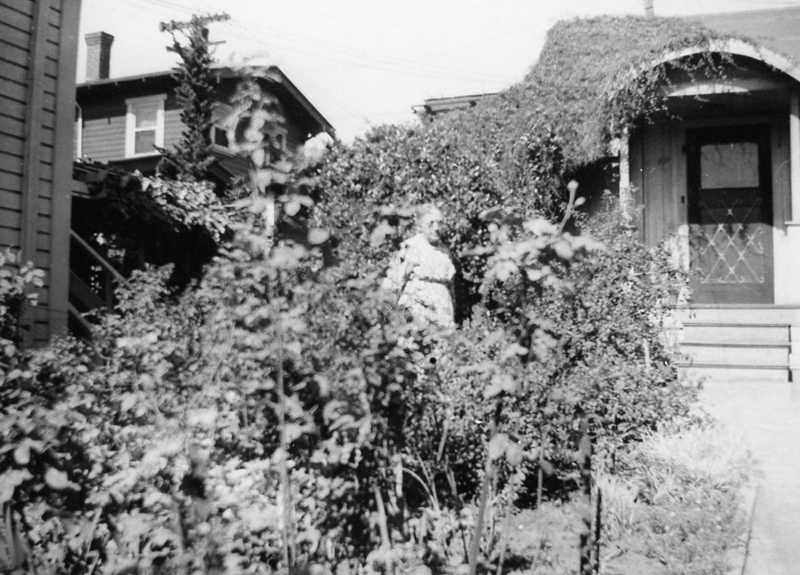
The photo below was taken in 1956-57, when my parents still lived at China Lake, before the move across the valley to Inyokern. Mom is holding baskets full of apricots from her trees. Like I’ve said before, she made the desert bloom.
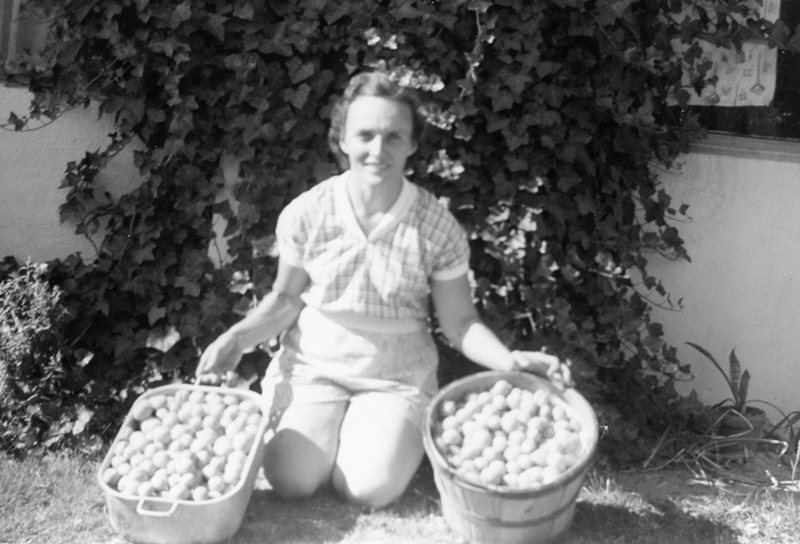
Playing:
Meanwhile, my dad’s family of six siblings seemed to be outdoors all the time, either at the beach or scrambling up the hillsides near their Los Angeles home. The photo below is of all six of them, in 1925.

Camping and Adventuring:
My dad’s family also liked camping, and when we were young, Dad often took us camping as well. The photo below is Death Valley, 1927, with the note, “Sunday dinner.” I bet whatever it was, it was delicious. I love food cooked over a campfire!
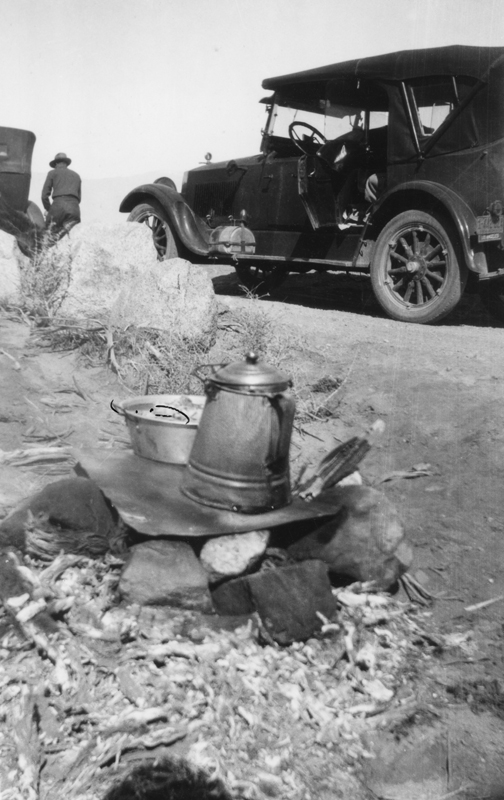
My mother’s family spent at least one Easter vacation, in 1938, in the desert. Below is my mom, ready for a shoot-out.
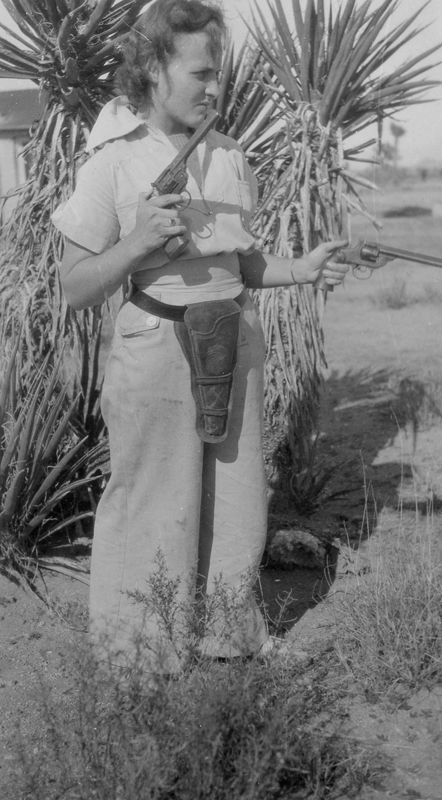
Then there is this… My Aunt Betsy in 1949, in Yellowstone, taking a casual photo with a bear.
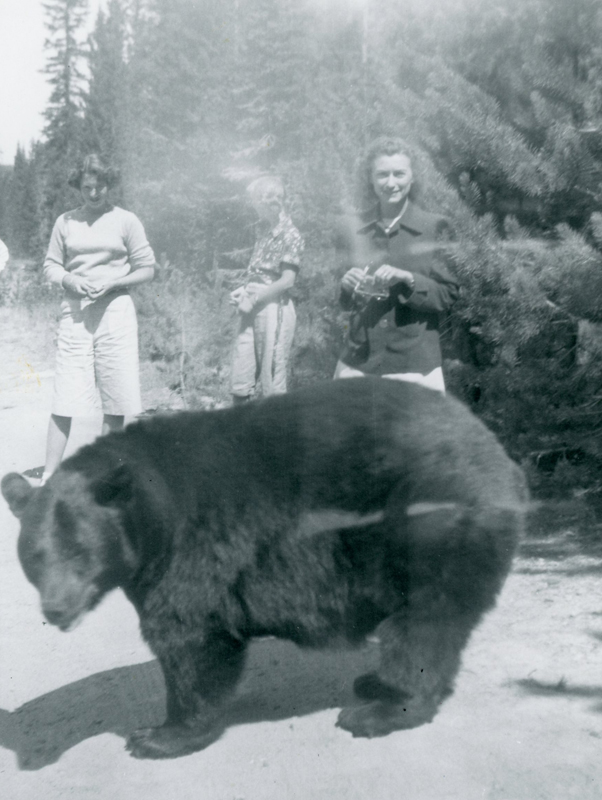
By 1950, my parents had a travel trailer, heading most often up Highway 395 to Lake Crowley.
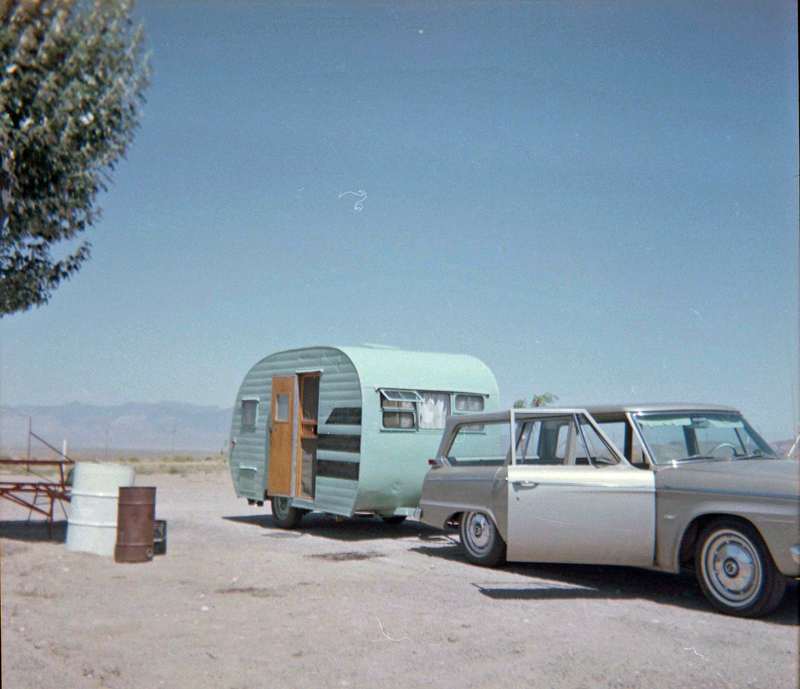
Below is one of my favorite photos of the two Keene brothers, Charles and George, on the fishing trip to Lake Crowley, 1950.

My mother’s grandparents (Willis and Theoline Soland Wells) eventually settled in Hamilton, Montana, where like many ancestors before them, they were farmers. But, that wasn’t the extent of their outdoors activities. My Aunt Mabel grew vegetables and fruit in her enormous garden and orchard. I have photos of the family enjoying the outdoors in the mountains and streams, picnicking or hunting. The photo below was taken in 1927-1928. I believe my mother’s father, Nampie Wells, is on the far left.

i have quite a few photos of my dad’s family picnicking up in the Sierra Mountains. The photo below is of my Nana Keene and Aunt Virginia at the Mt. Whitney Cafe, 1950.

Here’s another outdoor adventure from Dad’s family. My parents and their three older children joined my grandparents and aunts in the mountains, 1953. The photo below is of my aunt Bea (with the head scarf) getting a cup of cowboy coffee from my mom. seated behind Mom are my oldest sister, Jeanne, and Nana Keene. On the other side of the table is my brother, Bob (on the table), my father, and his father. What I loved in this series of pictures is that all the women are wearing skirts!

The photo below is of my younger brother, Richard, and me on a family vacation to Santa Cruz in 1970.
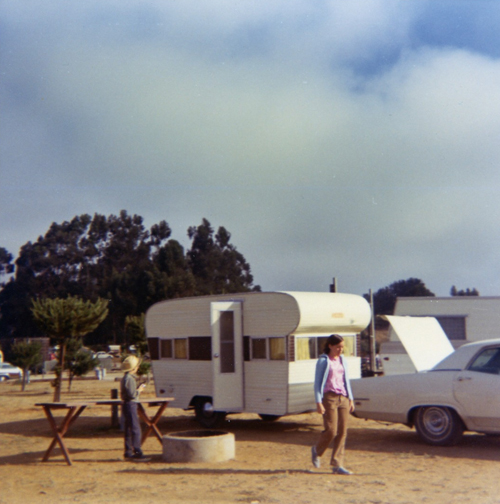
Horseback Riding:
I did not inherit my dad’s love of horseback riding; I admit, I am a scaredy cat. The photo below is of my two oldest siblings, Bob and Jeanne, in 1948, riding our aunt Virginia’s horse, Smokey.
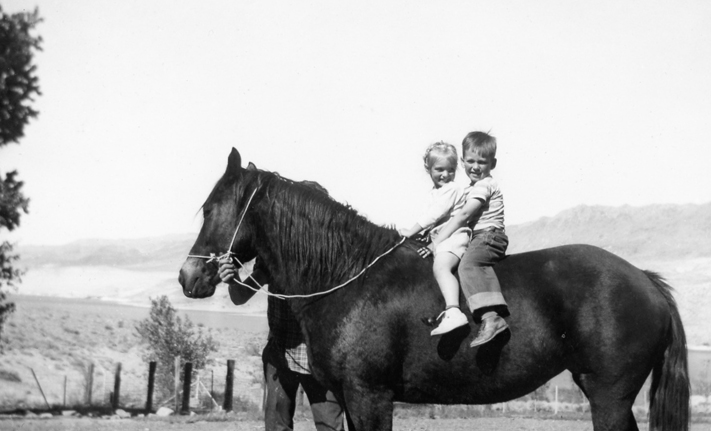
My dad rode horses for most of his life. he was in the Cavalry in the Army, and when I was small, he and his friends would take pack mules up in the mountains to hunt. here is in 1973, on my brother Bob’s horse, Tinkerbell.

Swimming:
None of us are avid swimmers, but growing up on the desert, there’s nothing like dip in the pool to cool you off (I really wouldn’t call it “swimming.”) Here’s my mom and my three oldest siblings in what I think is the navy base pool, 1948.
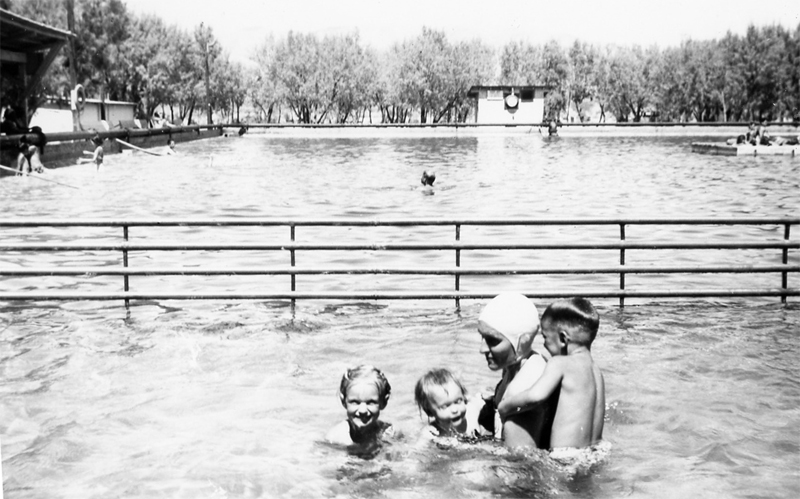
Out in hot, dusty Inyokern, even a kiddie pool was a treat. this is 1960, and my brothers and I are enjoying a splash.
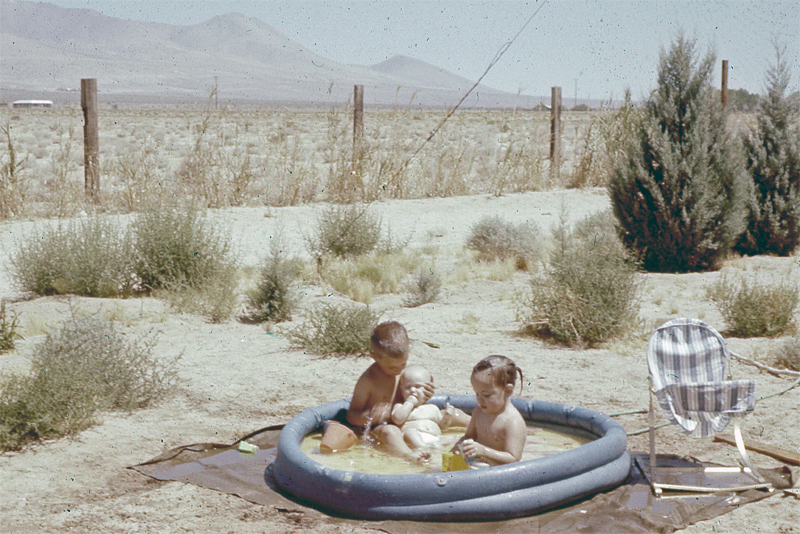
Well, this post is already too long and, but I had so much fun looking through my photos. I have loads more, but I will spare you and save them for another day. What I learned is that my family isn’t as indoorsy as I thought. We’re not exactly REI material, but neither are we afraid to occasionally get out and get up close and personal with nature (Too close, Aunt Betsy!).
And, nothing tastes better than a breakfast of pancakes and bacon cooked over a campfire. Am I right???
’til next time.









